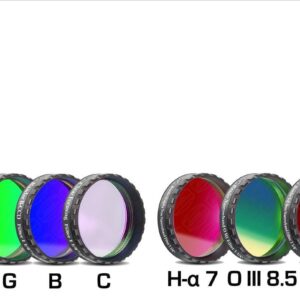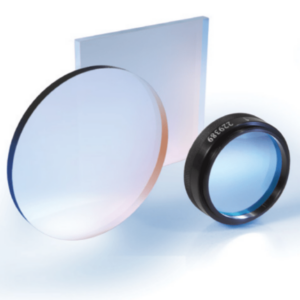Ideal filters for the reception of the moon and planets, notably Mars, with telescopes from 6″ (150mm) aperture.
The ProPlanet IR 742 only allows infrared light with wavelengths of more than 742 nm to pass. In this wavelength range, the effects of seeing are significantly lower than in the visible spectrum of the human eye. This allows much sharper images than are usually obtained from your device and location. Another advantage is that the sky background of advanced dawn is dark and so the filter even allows photography of the planets and the moon at daylight.
Main use
The Astronomik ProPlanet IR 742 cuts off the visible part of the spectrum and allows the light of wavelengths longer then 742nm to pass. Due to this behavior, the part of the spectrum that is most sensitive to bad seeing is rejected. This approach does a big improvement to the imaging of planets and the moon. The image is more steady than the image in the visible light with nearly identical exposure times.
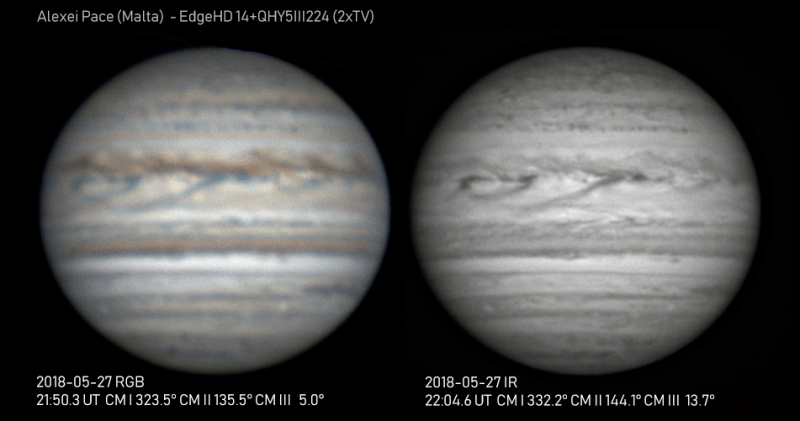
Jupiter imaged with L-RGB Filtern (left) and Astronomik ProPlanet 742 (right)
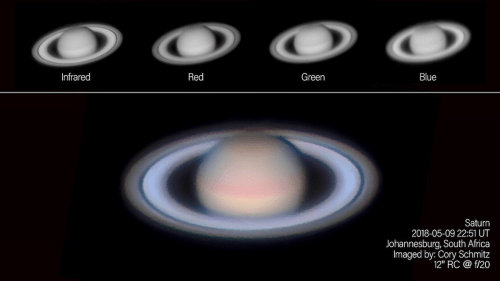
Comparing sharpness in IR-R-G-B at Saturn
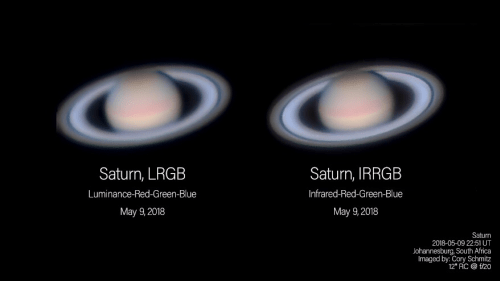
Comparing L-RGB versus IR-RGB at Saturn
Other uses
-
-
- Besides astrophotography the filter allows you to get stunning results in nature photography. If an EOS-Clip Filter is used in an MC modified DSLR you get tremendous results imaging the flora. The filter cuts off the part of the spectrum where Chlorophyll looks green and shows its high reflectivity in the near-infrared. If trees are photographed in spring and summer under blue skies you get stunning images with white trees and clouds in front of a near-black background.
- Darkens the background during twilight.
- Imaging of bright planets, stars, and comets by day.
- Imaging of young stars in dust clouds and stellar nurseries.
-
Alternatives
When the seeing is very bad and the instrument is 10″ (250 mm) or larger, the Astronomik ProPlanet IR 807 may be the better choice.
Transmission curve:
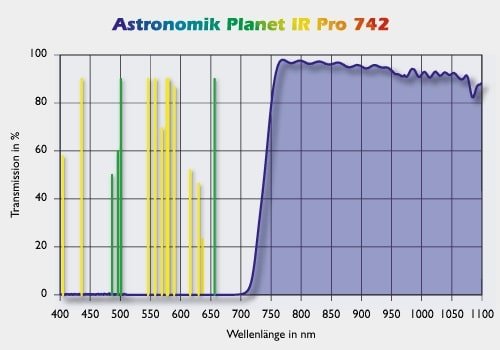
Technical Data
- more than 96% transmission for wavelengths of 742nm to 1100nm
- blocking of wavelengths between 350nm and 730nm
- Parfocal with other Astronomik filters
- Glass thickness: 1mm
- Completely resistant against high humidity, scratches, and aging effects
- Diffraction limited, the filter will not reduce the optical performance of your telescope!
- Astronomik filters are delivered in a high-quality, long-lasting, filter box
- Since 2008 we do ship filters with a completely new design. Any kind of halo or strange reflection is a matter of past
Available in other sizes and formats. If you do not find the size you want, contact us at info@lunatico.es.


